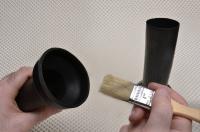
Polyolefins are thermoplastic polymers that are used in an astounding variety of products. These versatile plastics are composed from monomers of ethylene or propylene. They can be easily processed through the following techniques:
- Injection molding
- Blow molding
- Extrusion
- Thermoforming
Polyethylene (PE) and polypropylene (PP) are the most prominent types of polyolefins on the market today.
Available in a wide range of diverse grades these products exhibit numerous advantageous properties such as:
- Durability & toughness
- Resist chemical attack
- Withstand tear, impact, stress cracking
- Large strength to density ratio
- Lightweight
- Barrier against gases, water vapor
- Excellent dielectric characteristics
- Good weatherability
Some key industries that utilize polyolefins extensively are:
- Electrical
- Electronics
- Medical device
- Automotive
- Packaging
- Home appliance
- Laboratory equipment
- Textiles
- Athletic goods
- Pharmaceutical
- Chemical processing
- Agriculture
- Renewable energy
- Mining
Major examples of specific applications for polyolefins are shown below:
- Insulators for wires and cables
- Piping systems for distributing gas and water
- Tubes for intravenous fluids
- Automotive bumpers, fuel tanks, interior trim, dashboards, climate control, cooling systems
- Switches and connectors
- Medical syringes
- Inkjet printers
- Electric tool housings
- Appliance parts
- Cabinets and fumed hoods
- Car speakers
- Chemical shipping containers
- Filtration systems
Consideration for Bonding Polyolefins
Polyolefins are very difficult to bond due to their low surface energy. In order to meet the needs of various applications, Master Bond has developed adhesive primers to bond polyolefin substrates. These systems are convenient to apply, feature long-term durability and save time and energy.
In situations where the primer is not applicable, the adhesive bonding can be facilitated via proper surface pretreatment prior to bonding. The pretreatments which are widely accepted include flame treatment, corona etching, and plasma treatment. Following any one of these surface pretreatments, an appropriate epoxy, polyurethane, silicone or other adhesive system can be used depending on the type of service environment the adhesive would be exposed to.
Some of Our Most Popular Bonding Systems for Polyolefins
 |
X18 Single component adhesive/primer for polyolefins. Cures at ambient temperatures. Very low viscosity. Easy to apply. Sets up in 30-45 minutes. Superb electrical insulator. Clear to light amber color. Serviceable from -60°F to +200°F. |
 |
X21Med Specially formulated one component system for bonding and priming polyolefinic surfaces. Can be used as a primer to promote adhesion of polyolefinic substrates to other surfaces such as metals, ceramics. Viscosit <250 cps. Room temperature curing. Serviceable from -60°F to +200°F. Passes ISO 10993-5 for medical devices. |
 |
X21 Specially formulated one component system for bonding and priming polyolefinic surfaces. Can be used as a primer to promote adhesion of polyolefinic substrates to other surfaces such as metals, ceramics. Viscosit <2,50 cps. Room temperature curing. Serviceable from -60°F to +200°F. |
